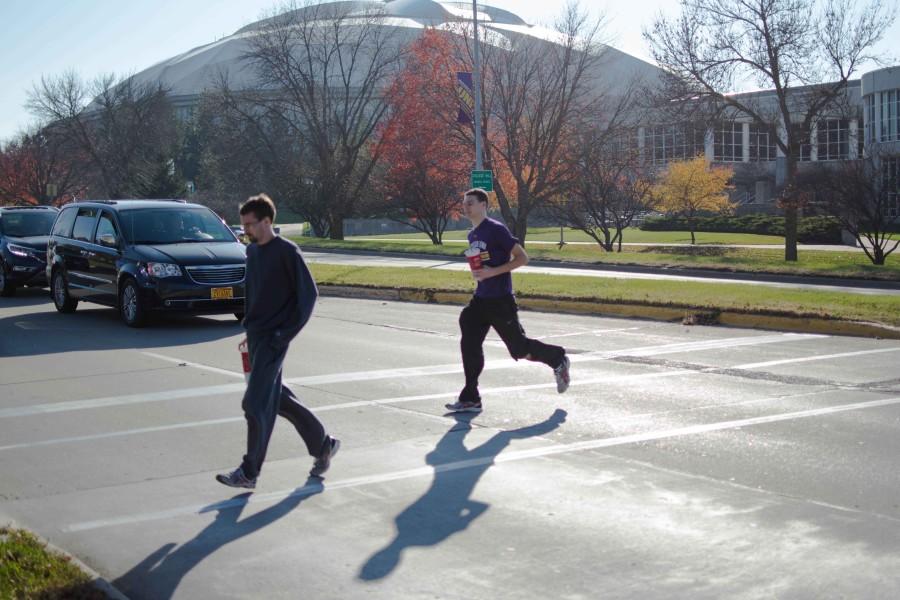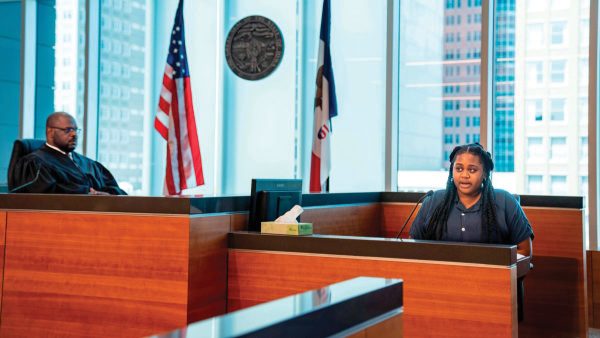Guest column: free tuition myth cause for concern
Nov 19, 2015
I was disturbed when reading the front page article “ ‘Hit by a car? No free tuition’ ” on Thursday, November 5. While there was the desire to accept that all students knew this was simply a myth, I was forced to acknowledge the probability of some accepting this urban legend as truth.
Sites along 23rd St. similar to the crosswalk discussed in the article have received yield signs warning drivers of pedestrians. The signs, however, seem only to provide a soft light to nearby residence halls, rather than any strict adherence by campus drivers.
Likewise, the intermittent police presence within the 23rd St. circle has only served to provide improved driving during the hours a visible car is stationed.
Signage and police presence aside, the Health and Safety committee proposal of a fence like that near the Quads would serve to direct foot traffic away from a marked crosswalk, while in contrast the Quads’ fence directs foot traffic to similar marked crosswalks.
Redirecting an existing marked crosswalk with the proposed fence could set a dangerous precedent for concession of Iowa Code §321.327, “Pedestrians’ Right-of-Way,” which calls for cars to “yield the right-of-way [to pedestrians], slowing down or stopping if need be to so yield” at all marked crosswalks, or those which are unmarked at the point of an intersection.
Furthermore, such a fence would encourage reckless driving by allowing it to continue in this location without consequence.
The November 5th article hasn’t just highlighted the issues of crosswalks and campus traffic, however.
While there are many problems with the crosswalk – the absence of both signage and drivers’ education among them – there’s another glaringly despicable problem within the “free” tuition myth: the willingness to accept physical injury as alternative to the insurmountable debt of tuition.
The fact that this myth exists suggests students’ willingness to risk life and limb to pay such debt.
When your future paycheck dictates the track of your education, rather than your interest or aptitude, is it any wonder that students are so ready to sacrifice their physical well-being as easily as so many have their mental well-being?
I don’t wish to count the fatalities the stresses of college have brought upon this university, and I most certainly don’t wish to hear of any additional injuries brought on by ignorant driving and dangerous urban legends.
Financial, social, and other stressors brought on by American higher education have been pushing students to the boiling point for decades, and a not-too-recent storm brewing in the political atmosphere is only turning up the heat.
Politicians like Kansas Gov. Sam Brownback (rep.) – have proposed a $45 million cut to his state’s education earlier this year, according to a February article by MSNBC – and Louisiana Gov. and presidential ‘hopeful’ Bobby Jindal (rep.) – cut one-third of Louisiana’s education budget, roughly $300 million, according to Huffington Post in May – highlight college students’ bleak outlook on funding their education.
The National Center for Education Statistics showed an average semester’s rates rising from $7,534 in adjusted 2013-14 dollars for public four-year universities in 1982-83, to a whopping $17,474 in 2013-14.
Likewise, CollegeBoard.org shows a rate in comparable universities in 1975-76 costing students $7,833 in adjusted 2015 dollars rising to the current average of $19,548.
A 2014 article by the American Psychological Association (APA) shows that tuition isn’t alone in rising among university students, showing 30.3% of students receiving services in 2012-13 seriously considered suicide, increasing 6.5% from 2011-12.
The APA designates “depression” as a “mental disorder” with symptoms ranging from inability to concentrate to suicidal thoughts or urges, and defines “anxiety” and “anxiety disorders” as presented by affecting heart rate and other vital physical processes, as well as producing negative intrusive thoughts.
Depression and anxiety are each classified as a “mental illness” by the Center for Disease Control, even publishing the article, “Depression as a Correlate of Adverse Health Behaviors.”
Iowa Code §702.18, subsection 1, paragraph a includes “Disabling mental illness” in the official definition of “Serious Injury.” These state definitions are created to determine crimes committed against a person.
Many states acknowledge that causing serious injury to a person is unjust, and warrants repercussions, yet State and Federal governments foster environments where college students – the supposed future of said governments – develop disabling mental illnesses.
It is great that we can highlight health concerns on campus, such as traffic violations, but it is disturbing that the greater health concern which the urban legend alluded to goes unaddressed.
Students are already faced with paying off financial and social student debt for the rest of their lives. Perhaps we should focus on making sure students aren’t paying with the rest of their lives.
-Andrew Heppeard, senior


















